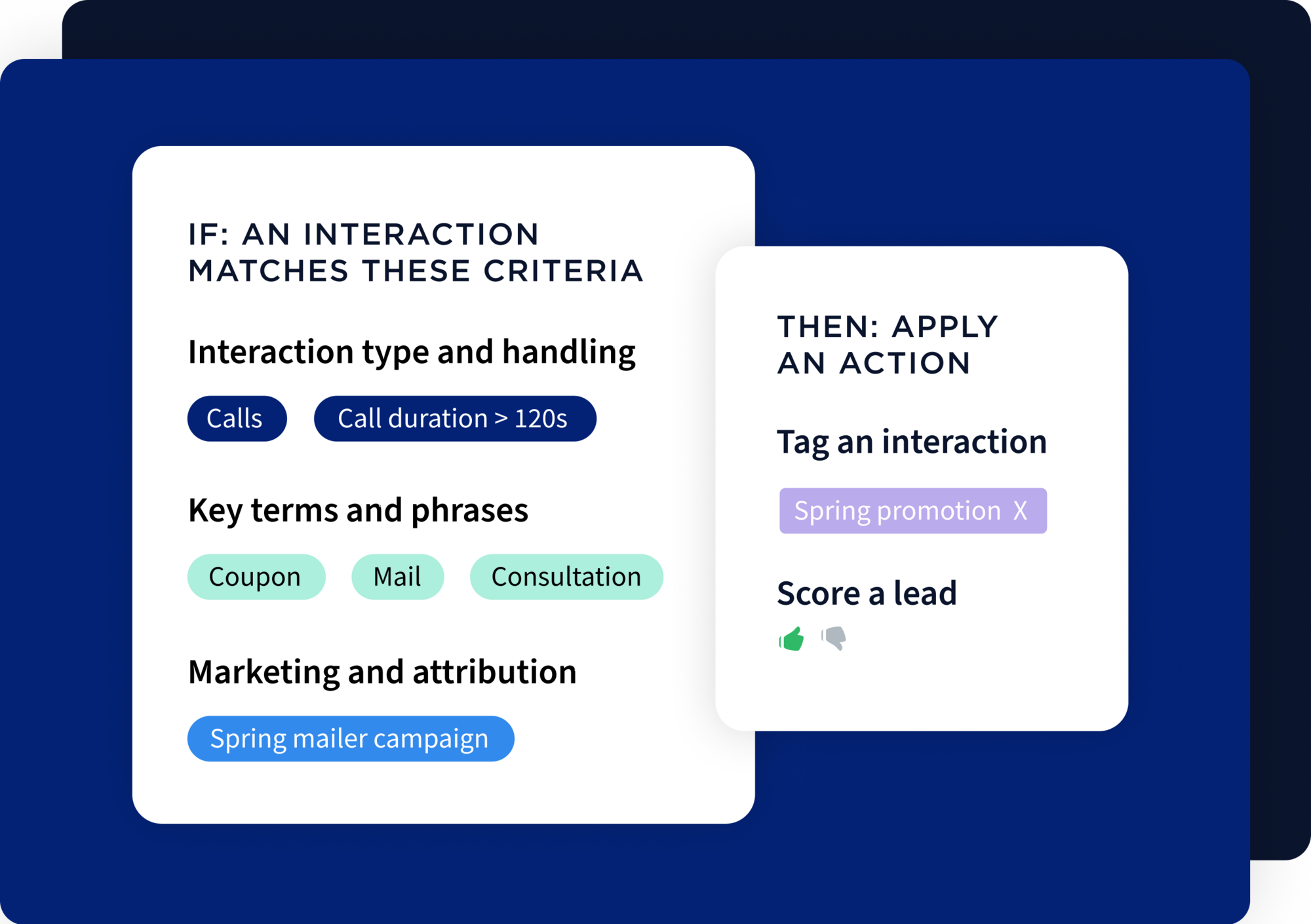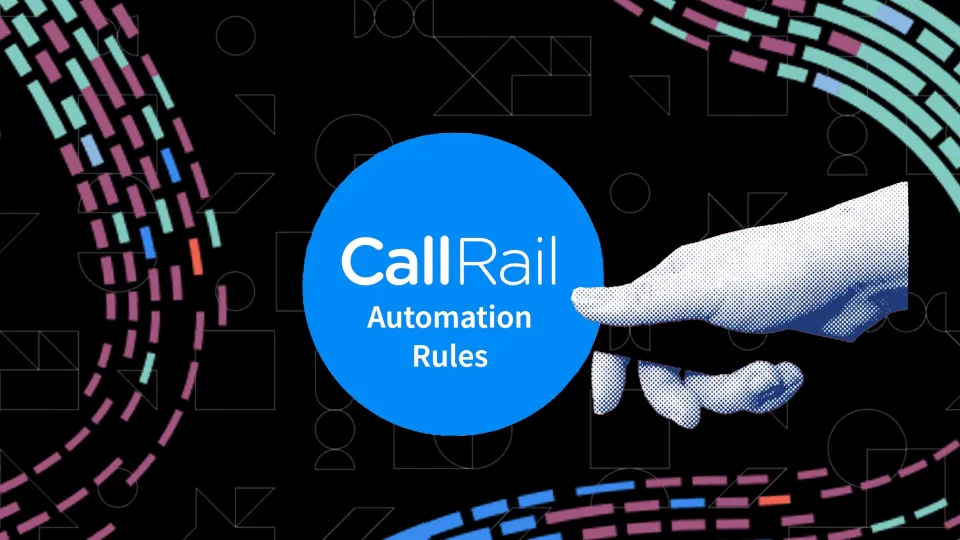Classifying or categorizing interactions manually is incredibly time-consuming, labor-intensive, and prone to human error. With Automation Rules, you can simply dive in and customize these templates as needed without starting the whole process from scratch.
In today’s fast-paced environment, every minute counts. Imagine a tool that not only saves you time, but changes the way you understand and engage with your customers. Enter CallRail’s improved Automation Rules - the secret weapon that empowers business owners and marketers to efficiently review and qualify leads, automate call coaching opportunities, and streamline lead routing and classification.
So how do Automation Rules work?
Automation Rules is just one of many powerful features included in our Conversation Intelligence® product. So how does it work, and why should your business integrate it into your workflow? Automation Rules automatically classify and categorize calls and form submission interactions when specific behavior, attribution, or conversation criteria are met.
You can automate the entire lead qualification process in a matter of clicks using our predefined templates. We even have an industry template that allows you to automatically tag calls and form submissions based on terms specific to your industry — a popular request by our customers.
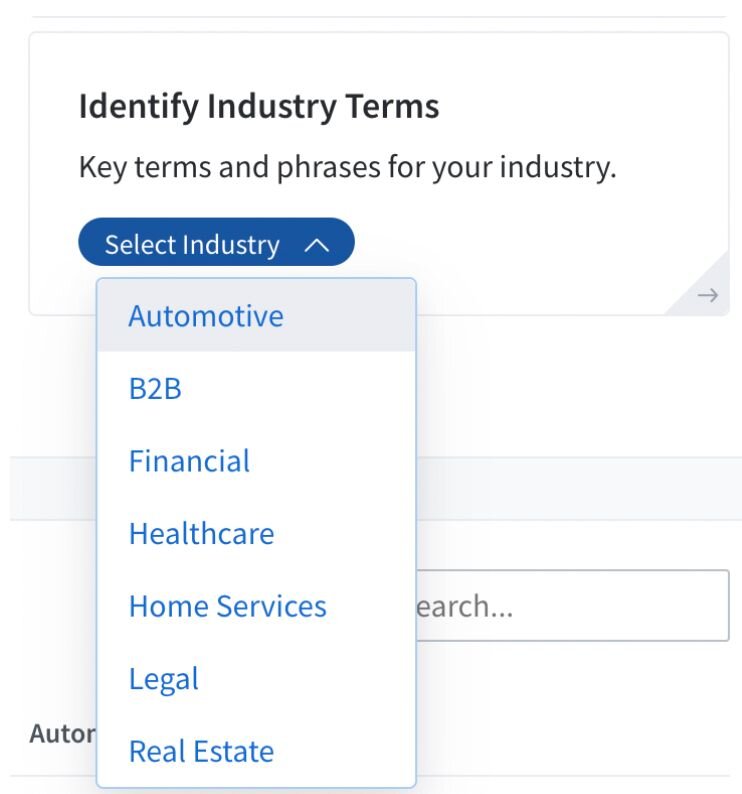
Classifying or categorizing interactions manually is incredibly time-consuming, labor-intensive, and prone to human error. With Automation Rules, you can simply dive in and customize these templates as needed without starting the whole process from scratch.
"We were using an overseas company to manually listen to, tag, and qualify our calls. Now we use CallRail's Automation Rules to automatically tag and qualify calls. We have been able to eliminate our overseas company entirely, saving $4,000 a month."
- Ryan Cook, Director of Client Relations at Wit Digital
Plus, there’s much more flexibility when classifying calls (or form submissions). You can set up attribution rules based on behavior identified in your data, such as duration, direction, source, or campaign.
For example, if you’re a marketer who wants to automatically qualify any call or form submission lead from Google Ads, tag it as an “opportunity.”
5 Powerful templates
Automating your lead qualification process is easier than ever with Automation Rules. Pick from a range of out-of-the-box templates to begin streamlining workflows in a few clicks. Get started with any ready-to-go templates and customize the rules to fit how you want to analyze your interactions.
Here’s a look at the templates you can choose from:
- Qualified lead: A lead is scored qualified when the speaker mentions terms like “appointment set, schedule, consultation, service, payment, buy, price, pricing, quote, estimate, cost, credit card, or purchase.”
- Customer rule: This applies the tag ‘conversion’ when any of the following terms are mentioned, “payment, buy, price, pricing, quote, estimate, cost, credit card, purchase, confirm, or appointment set."
- Quality (happy customer): Applies the tag ‘happy customer’ when any of the following terms are mentioned, “great, fantastic, wonderful, thank you, delighted, well done" or LACKS any of these terms: “angry, mad, upset, pissed off, annoyed, bad, poor service, or not great."
- Quality (unhappy customer): Applies the tag ‘unhappy customer’ when any of the following terms are mentioned, “angry, mad, upset, pissed off, annoyed, bad, poor service, not great" or LACKS any of these terms: "great, fantastic, wonderful, thank you, delighted, or well done."
- Identify industry trends: Arguably our most valuable template, this allows you to choose from an extensive industry list such as automotive, b2b, financial, healthcare, home services, legal, and real estate. The key terms will be populated according to the specific industry in question. For instance, home services key terms would include terms like "appointment set, come out, emergency, leak, flooding, fire, wind, damage, renovation, improvements, remodel, contractor, bathroom, kitchen, bedroom, living room, dining room, den, great room, garage, deck, patio, roof, gutters, only hot water, only cold water, quote, estimate, HVAC, broken, Angie’s List, Thumbtack, and Yelp."
- Custom rule: Instantly get started out of the box.
Getting started with automation rules templates
Setting up Automation Rules is easy. Here’s a step-by-step guide to show you how:
Step 1: Click the Analytics icon in the navigation bar on the left.
Step 2: Click the Settings tab at the top of the screen.
Step 3: Click Automation Rules in the sidebar on the left. If you have more than one company, choose the company you'd like to use from the dropdown.
Step 4: Choose one of the templates as a starting point (you can customize as you go), or click the Custom Rule box to build a rule from scratch.

Step 5: Choose the type of criteria you want to target by selecting one of the three tabs on the left of the screen.
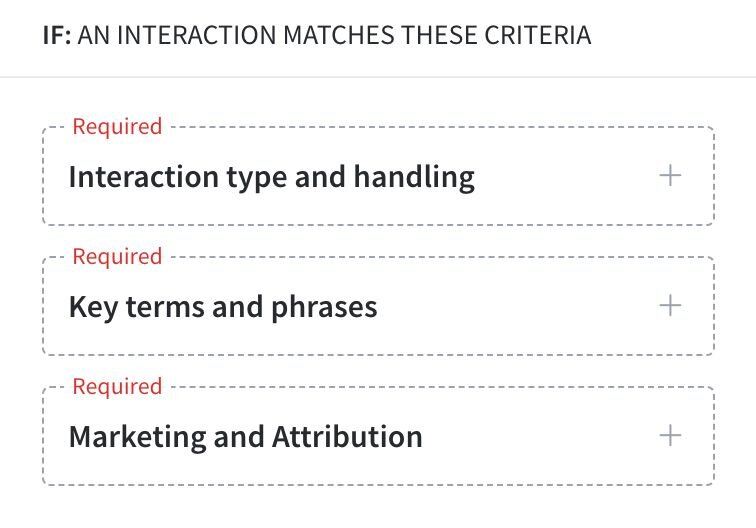
Then enter the specific criteria you want to target using the larger panel on the right.
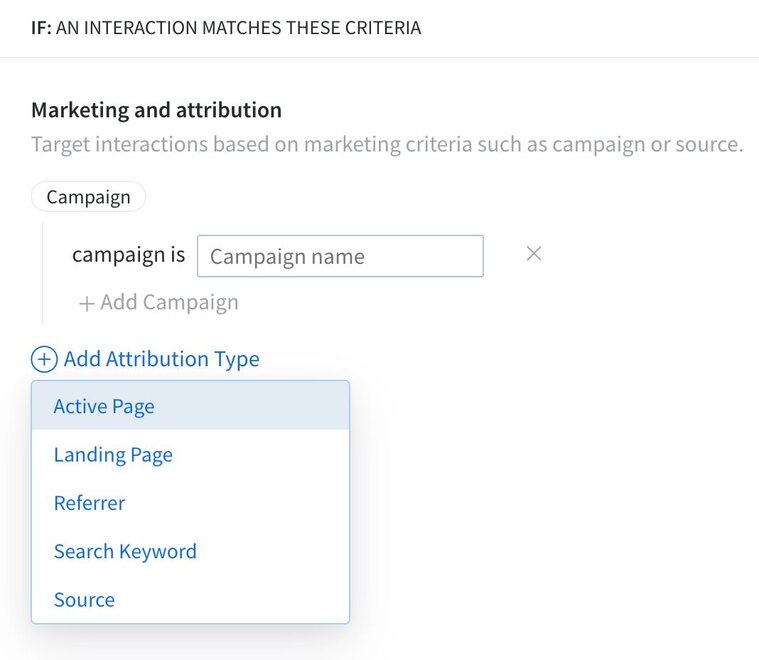
For instance, if you want to target calls in which customers say certain words, you would select the Key terms and phrases tab on the left and then enter the words you want to target on the right.
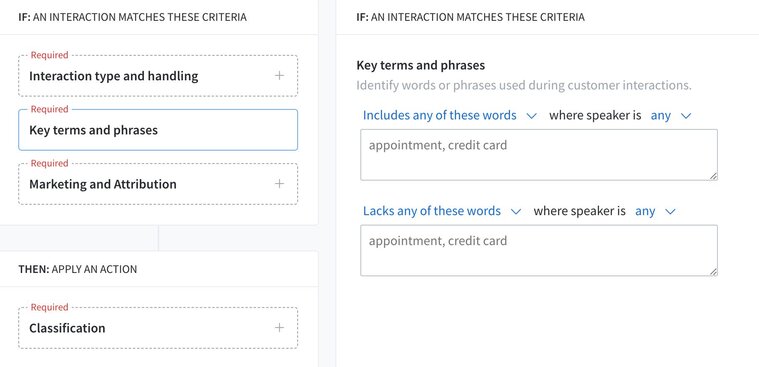
Step 6: Choose an action using the Classification tab in the bottom left. This lets us know how to classify the interactions that meet your criteria.
You can tag an interaction, score an interaction as qualified or non-qualified, or assign a monetary value to an interaction.
Step 7: Once the rule is active, any interaction that meets your chosen criteria will be automatically classified based on your action.
Ensure your call qualification process rules with Automation Rules
Say goodbye to endlessly analyzing transcript after transcript. Thanks to Automation Rules, you can quickly and easily set up fully automated lead categorization — saving your business countless hours, improving your customer service, and helping you fine-tune your marketing strategy going forward.
Want to see the tool in action? Start your 14-day free trial of Conversation Intelligence.



